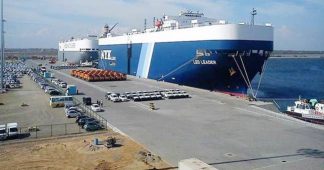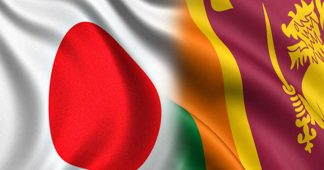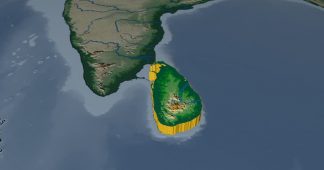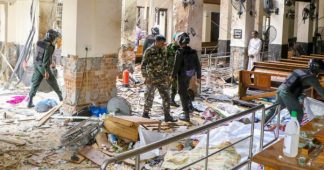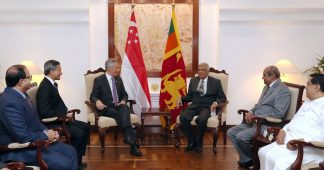By Lasanda Kurukulasuriya
Speculation that Western intelligence agencies had a hand in the well-coordinated, precision-timed Easter suicide bombings in Sri Lanka arises from a number of sources and circumstances.Analysts are still trying to figure out how the little known group ‘National ThawheedJamaath’ (NTJ) could have orchestrated such a feat. The terror group known as Islamic State in Iraq and Syria (ISIS), also known as Islamic State (IS) or Daesh, claimed responsibility through online videos. ISIS”s enemy is the West, and so Western governmentsunanimously expressed solidarity with Sri Lanka in its fight against the new terror (in a way they did not, with regard to Sri Lanka’s 30-year war against LTTE terror). One might recall howUS Secretary of State Mike Pompeosaid “This is America’s fight too.”Though IS is fronted for the attacks, answers to more specific questions such as who the handlers of the nine suicide bombers were, remain murky.
Someanalysts say that the targeting of Sri Lanka was not surprising.Sri Lanka is among several other Asian countries where ISIS attacks have unexpectedly occurred in recent years, offering an entry-point for Western-sponsored counter-terrorism activity or humanitarian assistance. Many targets of these latter-day, often inexplicable attacks claimed by IS, or other little-known terror outfits,have been strategically located states benefitting from China’s ambitious Belt and Road Initiative (BRI), which dispensesmulti-billion dollar investments for infrastructure projects like deep water ports, roads, railways and industrial parks. Sri Lanka, Myanmar, Pakistan and Bangladesh are cases in point.
The Philippines, whose president Rodrigo Duterte in 2016 threatened to ditch its longtime military alliance with the US, and turn to China, next year faced an attack by IS terrorists in the town of Marawi, leading Americans to further consolidate their military presence.
In Myanmar in 2017a little-known terrorist group called the ArakanRohingya Salvation Army (ARSA) staged attacks on security posts in Rakhine state, sparking a destabilizing security crackdown on the Rohingya community that resulted in a huge refugee exodus to neighbouring countries. Rakhine state is home to Sittwe port and a starting point of BRI infrastructure projects linking Myanmar with China’s Kunming city. The shadowy leader of ARSA is said to be not native to Myanmar but a Rohingya born in Pakistan and raised in Saudi Arabia.
Last month in Pakistan’s Baluchistan province five people were reported to have been killed in an attack on a star class hotel located near the port of Gwadar, which is being modernized under China’s BRI. Baluch separatists claimed responsibility. “The Baluch Liberation Army carried out a dozen attacks last year against Chinese-linked projects. In November, the group attacked a Chinese consulate in the major southern city of Karachi …” AP reported. It’s worth noting that in Sri Lanka too, two of the sea-front hotels that came under suicide bomb attacks overlooked the $1.4 billion Port City project, China’s single biggest infrastructure investment in Sri Lanka.
Those who hold a microscope to these ‘politically convenient’ conflicts in South and South-East Asia keep finding foreign fingerprints of big powers that seek to gain a foothold, in order to challenge a rising China. The American geopolitical researcher Tony Cartalucci gives a clue to what is happening on the global stage when he says “The US is both arsonist and self-appointed fireman.’
Creation of ISIS
Analysts have long argued that ISIS, like Al Qaeda before it, is a creation of US intelligence agencies. “Even as American foreign policy makers claim to oppose Muslim extremism, they knowingly foment it as a weapon of foreign policy” saysGarikaiChengu,writing for Global Research(‘America created Al Qaeda and the ISIS terror group’).Tracing IS’s roots to back to the US invasion of Iraq in 2003 the Harvard researcher shows how the pre conditions for radical Sunni groups like IS were created.
Writing specifically in the aftermath of the Sri Lanka attacks, Cartalucci said: “The US went as far as creating ISIS in the first place in a desperate bid to rescue its failed regime change campaign in Syria. It and its partners in Riyadh are now the prime suspects behind ISIS’ coincidental arrival on the shores of a newly established and major OBOR partner.” (‘Sri Lanka: How Saudi-backed terror targeted China’s allies’ – mintpressnews.com)
Cartalucci went on to argue “It is admitted that the US and its partners sought the creation of ISIS – its sudden appearance everywhere China is attempting to do business fits the now documented and admitted pattern of Washington’s use of extremism to fight and coerce wherever its standing armies cannot afford to intervene and a degree of “plausible deniability” is desired.”
Hidden actor
In order to assess the likelihood of a hidden actorin Sri Lanka’s case, it is useful to look at the trajectory of events since the April 21 attacks. Two months after, while the government has been at pains to show that ‘everything is back to normal,’ for most citizens, a sense of unease still hangs in the air, and many aspects of this horror story remain open-ended and unexplained. Targeting Catholic churches and 5-star tourist hotels, the bombings came like a bolt from the blue. They devastated the peace and relative stability that prevailed in the island in the preceding ten years, paralysed government, battered the economy, stoked flames of sectarianism, leftpainful scars in the affected communities and a sense of insecurity inthe wider citizenry. In other words, the country was brought to its knees.
In the face of it allthere wasremarkable resilience too. In a highly volatile situation where a religious minority had been targeted by extremists of another religious minority, inestimable service was rendered by religious leaders of all faiths, led by Malcolm Cardinal Ranjith, head of the Catholic church.Though their best efforts could not prevent a short-lived spell of politically-instigated violence in the North Western Province and Gampaha district, communal harmony at the community level was by and large maintained.The Sri Lanka police and military too won public confidence, tracking down the remaining terror suspects in a very short time, and recovering massive quantities of weapons, explosivesand other suspicious items.
Though arrests of suspects and weapons-detections continue to be reported from all parts of the country, the government has said that emergency regulations, under which these operations are being carried out, will be lifted at the end of this month. This announcement was made on 27th May at a meeting with Western diplomats by President MaithripalaSirisena, who had requested the envoys to lift the travel advisories issued by their respective countries, which badly affected tourism. It remains unclear whether the easing of travel advisories was implicitly conditional on a pledge to lift the emergency – a decision that would normally be made strictly on the basis of assessments by security and law enforcement personnel.
Western intelligence agencies
If the decision to lift the emergency had an air of having been ‘rushed,’ it is not the only one. In the immediate aftermath of these tragic events, Western intelligence agencies rushed in ostensibly to assist in the investigations. They came reportedly at the invitation of the Government of Sri Lanka. No details have been revealed, to date, on the work carried out by the foreign agencies(said to be ‘technical’ assistance) or on how these inputs assisted the CID in its probe. Anunnamed US embassy official on Wednesday reportedly told a group of journalists that the FBI assisted in analyzing the suicide bombers’ phonedata.
There is reason to believe however that the FBI in fact REMOVED the suicide bombers phones and other devices at an early stage, pre-empting the retrieval of vital evidence by local investigators. “All the bombers are dead. Their electronic devices have been taken away by the US Federal Bureau of Investigation (FBI) which is helping the Lankans in the probe,” an Indian Home Ministry official told the Indian Express. “Unless the data from these devices is made available, little will be known of the bombers’ India links” he said. If theunnamed official’s information is correct it would mean that Sri Lankan investigators too (nor the rest of the world for that matter) would get toknow what was recorded in those devices, that might have given a clue as to who the suicide bombers’immediate handlers were. The question then arises as to whether the Americans in fact sabotaged the investigation, under the pretext of assisting with forensic analysis of the phones and devices, calling it ‘technical assistance.’
Asked whether the FBI had ‘taken away’ the bombers’ phones, Police Spokesman SP RuwanGunasekera neither confirmed nor denied that this was the case, saying he was ‘unable to give that information.’ Asked if the Sri Lankan investigators had the opportunity to analyse the devices before they were handed over to the FBI, and whether they had been returned, he said “All the foreign agencies worked along with the CID. They did so on our request.”
Indian investigation
India’s National Intelligence Agency (NIA) has for some years been probing two ISIS ‘modules’ as they are called, in Kerala (Kasargode) and Tamil Nadu (Coimbatore). They are suspected to have had connections in Sri Lanka. Ahead of Indian Prime Minister NarendraModi’s9th June visit to Colombo the NIA sent a two-man team to gather information relating to contacts the Indian suspects may have had with the Easter Sunday bombers and their ringleader ZahranHashim. The Indian Home Ministry official’s remarks were made following the NIA’s meetings with Sri Lankan authorities. The visiting NIAteam had shared some phone numbers of Sri Lankans who had been in touch with Indian IS suspects. After the Easter Sunday debacle NIA made two arrests, one in Kerala (MuhammedAzharudeen) and the most recent on Saturday, in Coimbatore (Sheik Hidayathullah).
The several Indian intelligence alerts issued ahead of the Easter bombings, catastrophically ignored by Sri Lankan authorities, werebased on a video found on the phone of an IS recruit in Coimbatore, in which Zahranspoke of the impending attacks. Considering this fact, and given the intense (almost paranoid) focus of Indian agencies on Muslim extremism and their close tracking of potential threats including IS-related activity, Sri Lanka’s lukewarm attitude towards getting Indian assistance remains a bit of a mystery. Indian media repeatedly cited Indian officials saying ‘Sri Lanka has shared no information.’ However Western intelligence personnel from much further afield rushed in, as if to ‘take ownership’ of the IS issue.In view of the FBI’s alleged removal of the terrorists’ phones and devices,questions might now be asked as to whether in fact there was pressure to hold off the Indians at the initial stage.
This line of investigation becomes more sinister in the light of a leaked ‘top secret’ letter, purportedly sent by Saudi Arabia’s foreign ministerto the Saudi ambassador in Colombo five days ahead of the Easter atrocity, ordering him to “delete all documents, computer data and latest correspondence with domestic and foreign members and groups, in addition to imposing a curfew for the embassy personnel unless it is necessary.” The Lebanese Al-Ahed News that first published a photo of the purported letter, reportedly said it further instructed the embassy to warn Saudi nationals to avoid crowded, public places on the ‘Christian Easter Day,’ and to reportto the ministry regularly on Sri Lankan authorities and their viewpoints. The Saudi embassy has strongly denied the allegations calling them ‘baseless.’
Saudi Arabia, a major Middle East ally of the US, is widely believed to ‘export’and fund the spread ofWahabbism, the puritanical teaching that fuels Muslim extremism of the type preached by ISIS. It was in Jeddah that another NTJ leaderAhmad Milhan, believed to have masterminded the April 21 attacks, and to have been planning a second strike, was arrested, with the help of Interpol which issued a Red Notice on him. He was finally extradited to Sri Lanka along with four others on Friday. Since the beginning of May the CID had been trying without success to get the Saudi authorities to hand over this arrested suspect, according to a Daily News report of 20.05.19.
Upcoming visits
It is against this backdrop that Sri Lanka is readying for visits by Japan’s Prime Minister Shinzo Abe’s Special Advisor DrHiroto Izumi (June 20-22) and US Secretary of State Mike Pompeo (around June27), coming on the heels of Indian PM NarendraModi visit of June 9.
In the ‘great game’ of geopolitics being played out in the Indian Ocean, Japan is aligned with the US and its allies, and is on board to promote the American mantra of a ‘free and open Indo Pacific,’ which is code for US strategy to contain China. The true purpose of this strategy was laid bare in US-INDOPACOM chief Adm. Philip Davidson’s statement to the Senate Armed Services Committee in February. In it he identified the rapid development of the PLA (People’s Liberation Army of China) as ‘the most important security development in the Indo Pacific,’ and went on to spell out his strategy for what he calls ‘combat-ready deterrence’ which is, “to win before fighting and, if necessary, be ready to fight and win.” While the rhetoric surrounding the ‘free and open Indo Pacific’ and ‘rules base order’ etc. projects an illusion of a peaceful goal, the INDOPACOM chief’s strategy document in fact reads like a blueprint for war, where the identified threat is China. Sri Lanka is described here as “a significant strategic opportunity in the Indian Ocean.”
The purpose of Pompeo’s visit, a State Department spokesperson said, was to “broaden and deepen America’s partnership with key countries to advance their shared goal of a free and open Indo-Pacific.” However it becomes clear from all of the recent diplomatic and other activitythat the purpose of US Secretary of State’s visit(book-ended between visits to New Delhi and Osaka, Japan) will be to pressure Sri Lanka into signing up on the utterly one-sided Status of Forces Agreement (SOFA) that will pave the way for the entry of US military into Sri Lanka – no matter that it is dubbed as ‘temporary.’The GSP+ trade facility, which a visiting US delegation is expected to discuss with Sri Lankan officials (presumably ahead of Pompeo’s visit) will no doubt be used in this carrot-and-stick game, to get Sri Lanka to comply. From the little that is known about the SOFA, its terms will reduce the host state to the level of a neo-colony.
Counter terrorism strategy
Modi and Japan’s State Foreign Affairs Minister Toshiko Abe who already met with Prime Minister RanilWickremesinghe, have kept the focus of talks on ‘counter terrorism strategy.’ With the Indian PM, Wickemesinghe is reported to have discussed a ‘proposed counter-terrorism plan to be jointly implemented by India, the Maldives and Sri Lanka.’ If there is a sense of urgency in all of these meetings taking place in short order, it would seem to be related to the Western alliance’s need to conclude their negotiations with a US-friendly prime minister whose term in power is in the balance, in view of upcoming elections.
The IS-attributed Easter Sunday terror attacks set the stage for this barrage of diplomatic discussions aimed at locking Sri Lanka within the Western sphere of influence, if necessary through defence pacts, to counter China.
There was also a visit by the UN Assistant Secretary General and Executive Director of the Counter Terrorism Executive Directorate (CTED) MichèleConinsx from 7-8 June 2019.Coninsx discussed “Tangible measures to collaborate with UN mechanisms in keeping with international norms and practices” on countering terrorism and violent extremism, a Foreign Ministry statement said. The UN’s Counter Terrorism Centre (UNCCT) was set up as recently as 2011. It may come as a surprise (or does it?) that the UNCCT’s main source of funding is Saudi Arabia.
“UNCCT was established through a USD 10 million contribution from the Kingdom of Saudi Arabia to the UN, following the recommendation included in the United Nations Global Counter-Terrorism Strategy (Pillar II, para 9). On 13 August 2014, the Kingdom of Saudi Arabia donated an additional USD 100 million to help finance the work of the UNCCT. Other donors of the Centre include the United States of America, the United Kingdom, Norway, and Germany amongst others” according to the website of the UN Office of Counter Terrorism.
With an Opposition that seems to have lost the plot, there would seem to be little chance of Sri Lanka escaping from being pressured into undesirable, ill-considered commitments that threaten sovereignty and place national security in jeopardy, unless intense public pressure is brought to bear on the all factions of the divided Sri Lankan government.
